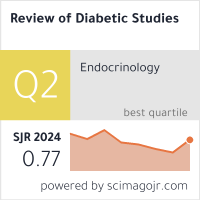Drug–Herbal Interaction Study Of Glibenclamide And Phyllanthus Emblica: Pharmacokinetic Alterations And Enhanced Hypoglycemic Effect In Rats
DOI:
https://doi.org/10.70082/6xgz4v33Keywords:
drug interaction, glibenclamide, Phyllanthus emblica.Abstract
Background: Patients with Diabetes Mellitus (DM) often combine herbal and modern medicine to enhance therapy and reduce side effects, but this may cause drug interactions. Amla fruit extract (EBM) has hypoglycemic activity and is potentially used with DM drugs such as glibenclamide.
Objective: This study aimed to obtain scientific data on the safe co-use of glibenclamide and EBM by evaluating their pharmacodynamic and pharmacokinetic interactions.
Methods: For pharmacodynamic studies, 18 rats were divided into 6 groups: normal and glibenclamide controls, EBM doses of 500 and 750 mg/kg, and combinations of glibenclamide with EBM at both doses. Glucose tolerance test was used to evaluate glibenclamide effects. For pharmacokinetic studies, 15 rats were divided into 3 groups: glibenclamide control, and combinations of glibenclamide with EBM at 500 and 750 mg/kg. Glibenclamide levels were measured at specified intervals using a spectrophotometer, and analyzed with PKSolver via compartmental methods.
Results and Conclusions: The results showed that glibenclamide experienced drug interactions when used with EBM at a dose of 750 mg/kg. The onset of drug interactions was observed for 90 minutes and the results showed that the hypoglycemia effect increased 7.5 times. Moreover, the mechanism of drug interaction occurs in the pharmacokinetic process but not absorption, Cmax and AUC glibenclamide increase significantly after being used with EBM. Based on these results, health workers are recommended to monitor a patient who uses EBM and glibenclamide simultaneously.
Downloads
Published
Issue
Section
License

This work is licensed under a Creative Commons Attribution-ShareAlike 4.0 International License.


